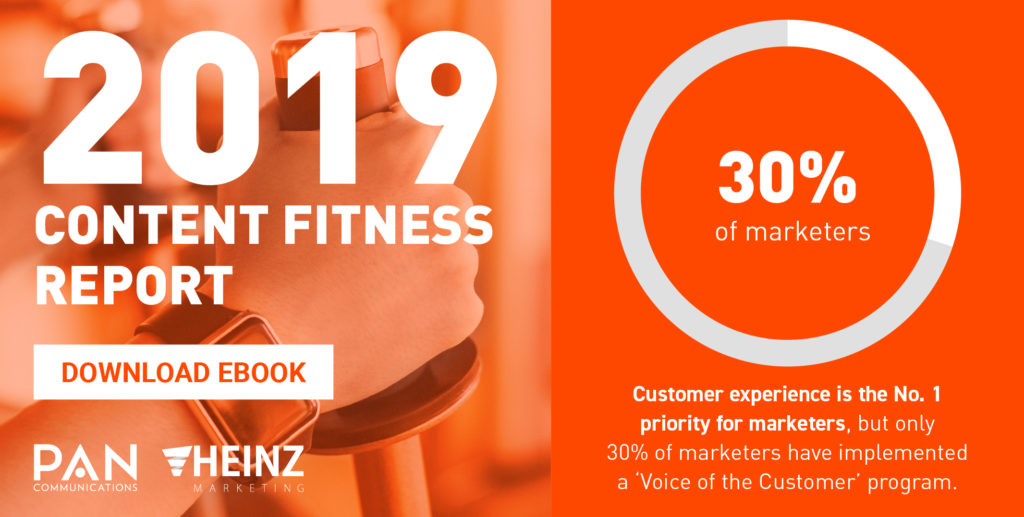How do you feel about your content marketing strategy? Has it been the guiding force that you intended, helping you attract new audiences and converting them to leads? Content marketing isn’t a perfect science—nor is it a one-and-done kind of activity. While you may only make major tweaks to it once a year, you may be better served by giving it a more regular checkup.
Even if your content is performing well, your content marketing strategy may still need adjustments. The thing is, now you have data. As you execute the strategy and begin to gather analytics on your content, you gain insights into what your audience is responding to the most. You can then leverage this to build upon a strategy that’s already working well.

Is Your Content Strategy Fully Integrated?
A fully integrated content strategy is vital to helping brands achieve their goals. What integration means is that all aspects of content marketing are working together from PR to social media to email marketing.
With this approach, you’ll ensure consistent messaging across all formats and channels. Each piece of your content marketing works to reinforce this message, as well. Ultimately, integration allows you to get the right message in the right channels at the right time and in front of the right audience.
In PAN’s recent 2019 Content Fitness Report, 100+ content marketing pros were asked questions about how their content strategy is performing. PAN specifically asked them about integration, and 62.5% of marketers defined their strategy as fully integrated, a 9% increase from the previous year.
This statistic shows that content marketers are putting more emphasis on the integration of their strategy. However, there is still some inconsistency across the board. Integration can be harder for larger enterprises, which may suffer from silos. Embracing integration and collaboration is a smart move for savvy content marketing teams.
How Is Your Content Marketing Strategy Helping You Build Trust?
One of the goals of content marketing is to create a connection with your audience. That connection needs to be built on trust. And trust is heavily on the mind of marketers, according to PAN’s survey. It found that marketers are most concerned with the customer experience and authenticity when it comes to trust-building.
With an environment that is saturated with content, you have to stand out. Building trust enables your audience to see you as an expert and a thought leader. All of this can be accomplished by enhancing their experience and being genuine. Ensure these characteristics and goals are part of your content marketing strategy so that you have a holistic approach to developing trust. That means you need to be thoughtful in how you construct your content so that it’s compelling, interesting, and easily digestible.
Integrating Advocacy: Tapping Into Your Employee and Customer Base
Another way to authentically engage with your audience is by highlighting the voice of your customers (VoC) and the voice of your employees (VoE). It’s been proven that your audience is more likely to read a post from a friend or brand advocate than they are from the brand itself, so this process organically builds trust.
VoC should be an integral part of your content strategy. By highlighting your customers through case studies, guest blog posts, Q&As and other types of content, you will be able to showcase their experiences with your brand and better target their pain points.
At the end of the day, your employees should be one of, if not your biggest brand advocates. Without highlighting the passion that they have for your brand and the work that they do, you are missing out on a critical element of your content strategy. Consider ways to empower your employees by integrating them into your social channels, blogs or throughout your website.
If VoC and VoE are not already a part of your upcoming 2020 content strategy, now is the time to start thinking about ways that these important groups can help build trust with your audiences.
How Are You Measuring Your Content Strategy’s Performance?

Determining if your content strategy is performing as expected isn’t easy. While there are numerous metrics you can track to measure the performance of content, they don’t always provide you with insights on your content strategy.
When it comes down to measuring it, you must go back and look at the goals that are driving it. Every content strategy should contain specific goals that you expect your content to meet. This could be anything from a certain percentage increase for eBook downloads or better social media engagement to increased blog subscribers. Whatever those specific goals may be, you’ll need a way to measure them.
And some marketers aren’t confident they’re doing it well. PAN’s survey found this to be a challenging area, with only 31.1% saying they can draw a correlation between content marketing and revenue. While 55.6% of marketers responded that they don’t feel confident in their ability to accurately attribute ROI to their content marketing programs.
The solution to this quandary is to develop a measurement strategy that becomes part of your content strategy. Without understanding your content’s impact, you’re just making content for content’s sake, and that’s not going to generate leads and develop fans.
Mastering content analytics and identifying content’s specific effect on how you attract and convert new customers is challenging. It takes time to craft the right approach so that you truly measure metrics that matter.
Where Are Your Content Strategy Gaps?
When developing your content strategy, do you assess it at the same time? Without a full-blown assessment of the past and present, you won’t be able to see the gaps. For example, if you haven’t assessed your content format performance, then you won’t know which formats are most consumable for your audience.
It’s also critical that you’re assessing the performance of your VoC and VoE content to see what’s resonating. Why spend time continuing to draft or repurpose content that isn’t working? Make sure you’re integrating with other departments like sales, HR and customer success to ensure that the content you’re sharing is relevant and timely, as they may be the ones who know the most about that specific audience. If you haven’t been integrating with these departments to date, be sure that this becomes part of your strategy in 2020.
Partnering with these departments and analyzing key sets of data should help you nurture your content strategy so that it grows without restraint. It’s good to look back at times like these because it will help you have a better plan going forward. You may also find that in your assessment, you’re not giving equal weight to different buyer personas. Maybe you have three distinct kinds of buyers, but your strategy only focuses on two. That’s a clear gap that you can identify and work to close.
What Are Your 2020 Content Strategy Plans?

It’s essential to revisit your content strategy before the beginning of a new year. So many things can impact what you’ll be doing in a few months. These are things your current content strategy may not account for, including developing new products, expanding into a new industry, or external factors like new regulations that will impact your audience.
All this intel, in addition to your metrics, should help shape your plan for the next year. You’ll be building new goals, and some of those should revolve around the topics we’ve touched on—fully integrating your strategy, building trust, and better metrics.
When you have this bounty of information, your plans for the immediate and long-term will come together more seamlessly and keep you focused on creating and executing a content marketing strategy that provides real results for your business.
Check out more insights from PAN’s Content Fitness Report by downloading your copy today.



